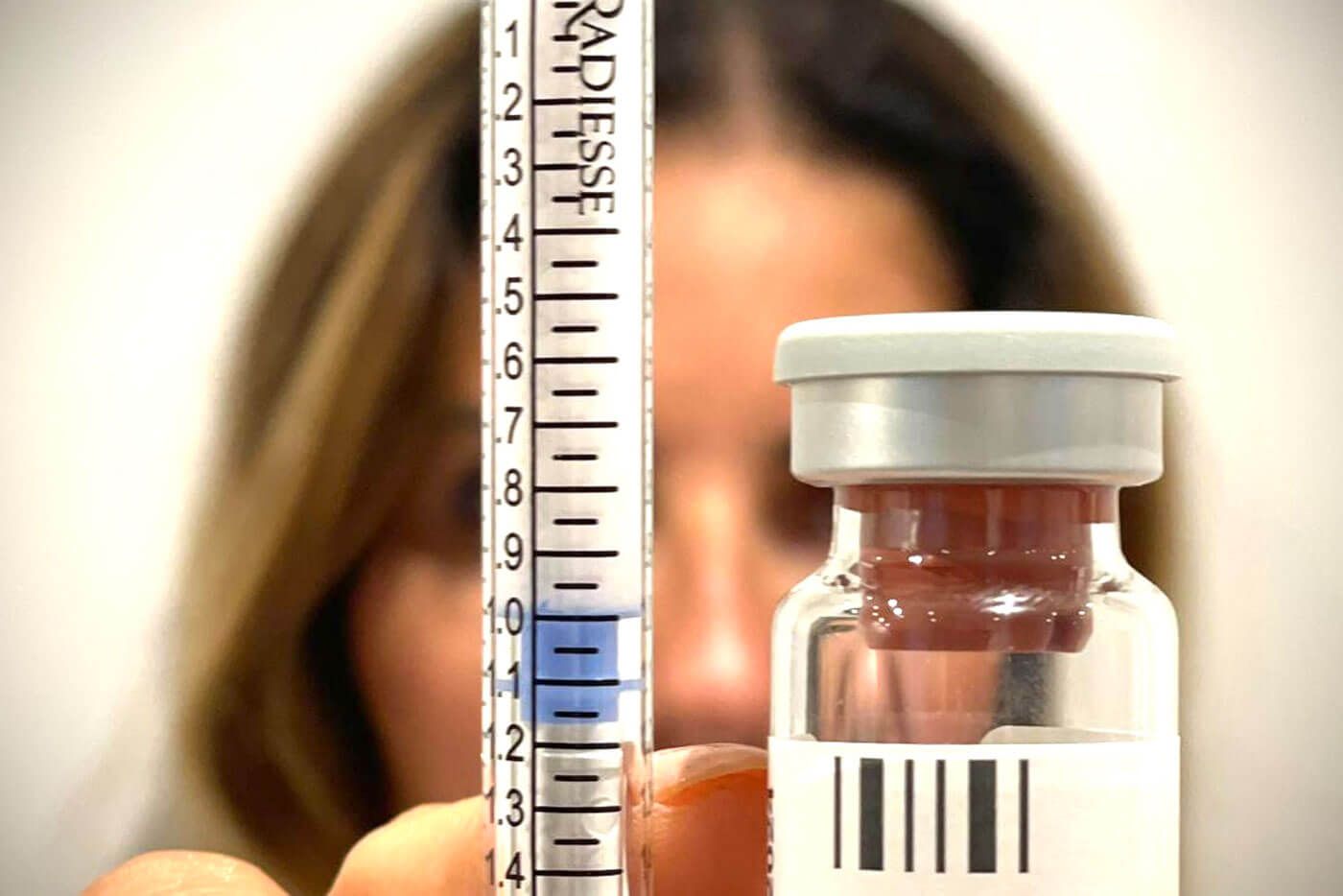Recognizing the Significance of Biostimulators in Modern Dermatology: Just How They Add To Skin Fixing and Rejuvenation
The introduction of biostimulators in modern-day dermatology notes an essential change in methods to skin repair service and renewal. These representatives not just advertise the natural production of collagen and elastin yet additionally use a non-invasive option to standard therapies, appealing to a diverse variety of individuals.

What Are Biostimulators?
Biostimulators are cutting-edge therapeutic agents made use of in dermatology to enhance the skin's regenerative processes. These materials, which can consist of a variety of naturally obtained substances, are developed to promote collagen and elastin manufacturing, inevitably advertising skin elasticity and firmness. Frequently made use of biostimulators include polylactic acid (PLA) and calcium hydroxylapatite, each of which has distinct residential properties adding to skin rejuvenation.
The mechanism of action of biostimulators focuses on their capacity to turn on fibroblasts, the cells in charge of producing essential extracellular matrix elements. By starting a waterfall of organic feedbacks, biostimulators not just improve the structural integrity of the skin however additionally facilitate healing and repair. This characteristic makes them particularly important in dealing with different skin-related conditions, including wrinkles, sagging skin, and marks.
Biostimulators are normally provided via minimally invasive procedures, using a much less intrusive alternative to traditional surgical interventions. Their gradual effects, which create with time as collagen synthesis rises, supply a natural-looking enhancement. As the field of dermatology continues to develop, biostimulators represent an encouraging opportunity for accomplishing youthful and rejuvenated skin through innovative healing methods.
Benefits of Biostimulators
Among the crucial advantages of biostimulators is their ability to provide natural-looking outcomes that improve skin rejuvenation without the demand for invasive surgery. These therapies promote the body's own collagen manufacturing, causing sustainable and gradual renovations in skin structure, flexibility, and general appearance. Unlike typical fillers, which can in some cases develop an artificial appearance, biostimulators promote an even more organic enhancement, enabling for refined results that age gracefully.
In addition, the flexibility of biostimulators makes them ideal for various skin types and problems. They can address concerns such as fine lines, sagging skin, and unequal appearance, making them an important choice for people seeking thorough skin rejuvenation. Additionally, biostimulators usually require very little downtime, enabling people to resume their everyday activities soon after therapy.
Another noteworthy benefit is the durability of outcomes, as the effects can last longer than those of traditional cosmetic procedures. This resilient end result is attributed to the progressive collagen synthesis that continues even after the preliminary therapy stage. Eventually, the consolidation of biostimulators right into skin-related techniques offers people a trusted and reliable service for accomplishing younger and rejuvenated skin.
Device of Activity
Promoting the body's all-natural processes, biostimulators work largely with mechanisms that encourage collagen production and tissue regrowth. Upon management, biostimulators launch a cascade of biological actions that turn on fibroblasts-- cells accountable for collagen synthesis.
In addition, biostimulators can regulate inflammatory responses, developing an optimal atmosphere for recovery. By promoting angiogenesis, they enhance blood flow to the treated area, making sure that nutrients and oxygen are successfully provided to support mobile tasks. The gradual launch of development elements from biostimulators also plays an important role, as these factors signal look at here now nearby cells to proliferate and migrate, assisting in tissue repair.
In addition to stimulating collagen, biostimulators might affect elastin manufacturing and glycosaminoglycan synthesis, adding to boosted skin structure and hydration. The synergistic impacts of these devices lead to a visible restoration of the skin with time, developing biostimulators as a useful device in contemporary dermatological therapies.
Applications in Dermatology
The systems underlying the activity of biostimulators have actually led the way for their varied applications in dermatology. These innovative representatives are mainly used for skin rejuvenation, injury recovery, and the therapy of different dermatological conditions. By promoting collagen and elastin production, biostimulators successfully boost skin flexibility and texture, making them very useful in aesthetic procedures focused on reducing fine lines and wrinkles.
In scientific setups, biostimulators are used to increase the healing process of chronic wounds, such as diabetic ulcers and stress sores. Their capacity to promote angiogenesis and boost mobile metabolic rate adds to boosted cells fixing and regrowth. Furthermore, they play a substantial role in treating skin laxity and quantity loss related to aging, offering a non-surgical alternative to traditional fillers.
Furthermore, biostimulators have actually shown guarantee in dealing with various skin disease, consisting of acne marks and melasma, by promoting skin renovation and reducing pigmentation irregularities. As a functional tool in the dermatological collection, biostimulators inevitably supply specialists with efficient options for enhancing both the visual and practical elements of skin health and wellness. Their diverse applications continue to broaden, demonstrating their significance in modern dermatology.
Future of Biostimulators
What developments lie ahead for biostimulators in dermatology? The future of biostimulators is poised for considerable evolution, driven by ongoing research and technological advancement. Emerging biostimulatory agents, such as novel peptides and development aspects, are expected to enhance the effectiveness of existing treatments, providing more targeted and powerful choices for skin renewal and repair service.
Additionally, innovations in distribution systems are anticipated to improve the accuracy and efficacy of biostimulators. Microneedling and nanotechnology Full Article might facilitate deeper infiltration of these agents, optimizing their restorative possibility while lessening negative effects. Such developments will likely bring about customized therapy regimens tailored to specific skin kinds and problems.
Additionally, the integration of biostimulators with regenerative medication strategies, consisting of stem cell therapy, is anticipated to more broaden their applications - biostimulators. This synergy might boost cells regeneration, giving services for even more complicated skin-related issues, such as scarring and aging
As medical trials remain to validate the safety and efficacy of new biostimulators, skin specialists will certainly have a progressively varied array of choices at their disposal. This progression advertises a transformative era in dermatology, emphasizing reliable and holistic skin treatment options.

Final Thought
Biostimulators represent a transformative innovation in dermatology, effectively adding to skin see this here fixing and rejuvenation. As continuous research unfolds, the prospective applications of biostimulators may expand, strengthening their role in the future of dermatological treatments and enhancing overall skin health and vitality.
The emergence of biostimulators in contemporary dermatology notes a pivotal change in methods to skin repair service and restoration.Biostimulators are ingenious restorative agents used in dermatology to boost the skin's regenerative processes. They can deal with problems such as great lines, sagging skin, and unequal appearance, making them a valuable option for individuals seeking thorough skin rejuvenation (biostimulators).Additionally, biostimulators have revealed assurance in addressing various skin problems, including acne marks and melasma, by advertising skin remodeling and reducing coloring irregularities.Biostimulators represent a transformative advancement in dermatology, effectively contributing to skin repair and restoration